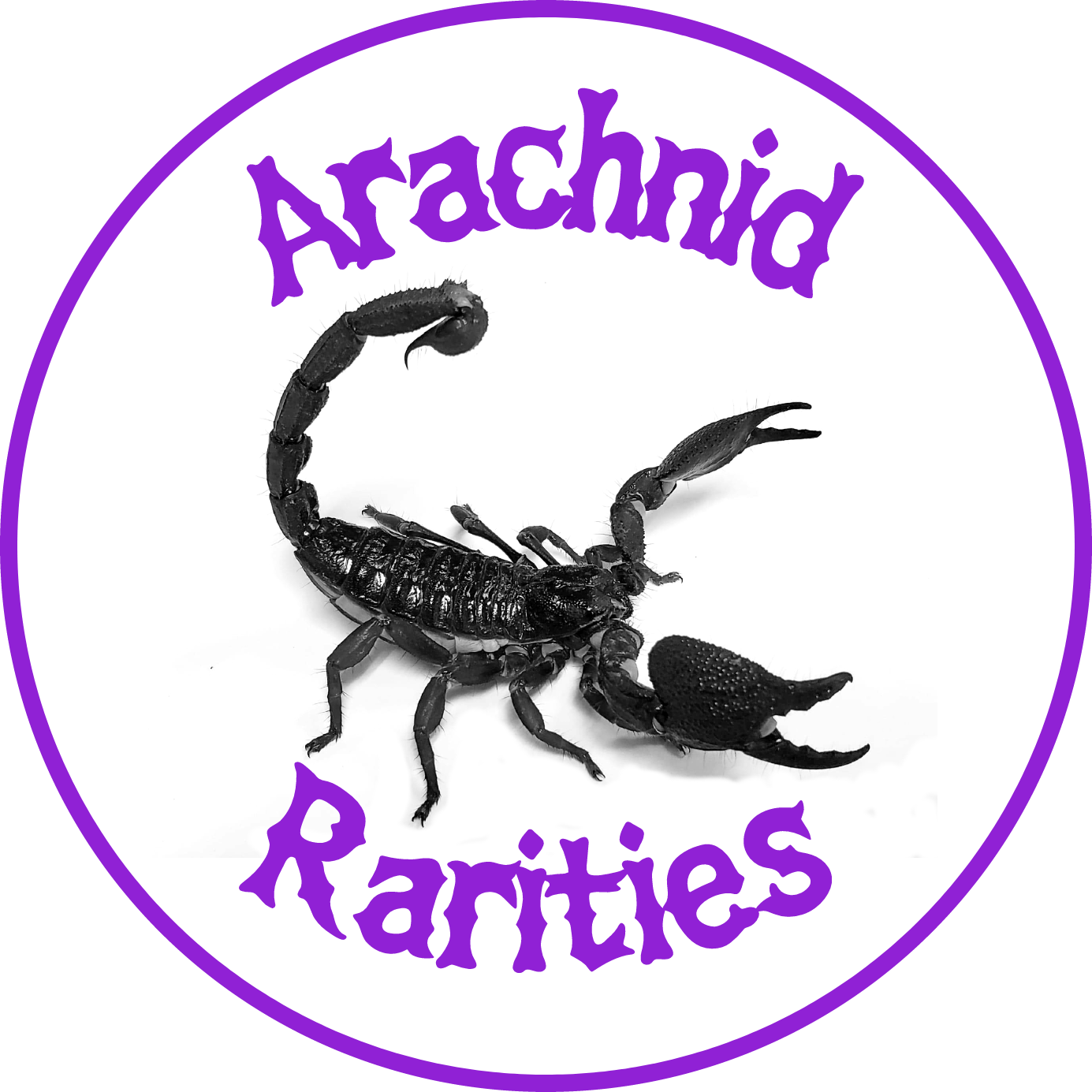Centruroides vittatus (Striped Bark Scorpion) Nebraska Locale
Did you know there are scorpions in Nebraska?! The state that Arachnid Rarities calls home has this awesome species. There are many color variations of Centruroides vittatus, but we think the Nebraska locality is the most beautiful. The contrast of colors with yellows and oranges makes this locale different from the rest. These are also Captive Bred!
Geographical Distribution: Southern United States, the original lineage of these were collected in Southern Nebraska.
Size: Small-Medium 2”-3”
Habitat: Semi-Arid - Solitary Housing when young, Group Housing when mature (Note: cannibalism may still occur, many cases of females cannibalizing males in group housing)
Substrate: Peat/Coco fiber/Sand (60/10/30 ratio) with vertical cork bark. Reptisoil works well too, can provide sphagnum moss to help maintain humidity. Substrate should stay slightly moist (clump together) but not wet (squeeze water out).
Temperatures: 77F- 85F (25C-30C)
Water requirements: Ensure substrate stays slightly moist by spraying the substrate with water as needed (Note, misting substrate is not sufficient, you must make sure the substrate is soaking up the water)
Photo is of a sub adult
Did you know there are scorpions in Nebraska?! The state that Arachnid Rarities calls home has this awesome species. There are many color variations of Centruroides vittatus, but we think the Nebraska locality is the most beautiful. The contrast of colors with yellows and oranges makes this locale different from the rest. These are also Captive Bred!
Geographical Distribution: Southern United States, the original lineage of these were collected in Southern Nebraska.
Size: Small-Medium 2”-3”
Habitat: Semi-Arid - Solitary Housing when young, Group Housing when mature (Note: cannibalism may still occur, many cases of females cannibalizing males in group housing)
Substrate: Peat/Coco fiber/Sand (60/10/30 ratio) with vertical cork bark. Reptisoil works well too, can provide sphagnum moss to help maintain humidity. Substrate should stay slightly moist (clump together) but not wet (squeeze water out).
Temperatures: 77F- 85F (25C-30C)
Water requirements: Ensure substrate stays slightly moist by spraying the substrate with water as needed (Note, misting substrate is not sufficient, you must make sure the substrate is soaking up the water)
Photo is of a sub adult
Did you know there are scorpions in Nebraska?! The state that Arachnid Rarities calls home has this awesome species. There are many color variations of Centruroides vittatus, but we think the Nebraska locality is the most beautiful. The contrast of colors with yellows and oranges makes this locale different from the rest. These are also Captive Bred!
Geographical Distribution: Southern United States, the original lineage of these were collected in Southern Nebraska.
Size: Small-Medium 2”-3”
Habitat: Semi-Arid - Solitary Housing when young, Group Housing when mature (Note: cannibalism may still occur, many cases of females cannibalizing males in group housing)
Substrate: Peat/Coco fiber/Sand (60/10/30 ratio) with vertical cork bark. Reptisoil works well too, can provide sphagnum moss to help maintain humidity. Substrate should stay slightly moist (clump together) but not wet (squeeze water out).
Temperatures: 77F- 85F (25C-30C)
Water requirements: Ensure substrate stays slightly moist by spraying the substrate with water as needed (Note, misting substrate is not sufficient, you must make sure the substrate is soaking up the water)
Photo is of a sub adult

